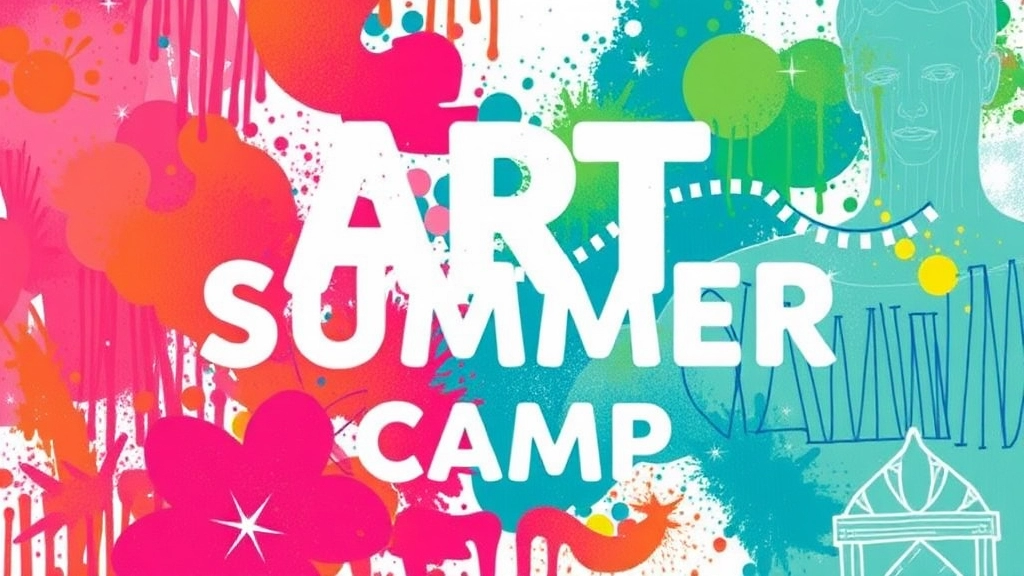Unlock Your Child’s Creative Potential This Summer
Are you ready to unlock your child’s creative potential this summer? Art summer camps offer a dynamic environment where young artists can explore various mediums, develop new skills, and make lifelong friends. From visual arts to performing arts, these camps provide a rich array of activities tailored to different age groups and skill levels, ensuring every child finds their niche.
Comprehensive Guide to Art Summer Camps
In this comprehensive guide, we delve into the types of art summer camps available, the myriad benefits of attending, and how to choose the right camp for your child. We’ll also cover the exciting activities offered, tips for preparation, cost considerations, and financial aid options. Hear real success stories and testimonials that highlight the transformative power of these camps. Ready to embark on this creative journey? Let’s get started!
Types of Art Summer Camps
Alright, let’s dive into the world of art summer camps. If you’re like most parents or young artists, you’re probably wondering: “What types of art summer camps are out there?” “Which one is right for me or my child?” Let’s break it down, no fluff, just the good stuff.
Visual Arts Camps
Visual arts camps are your go-to if you’re into painting, drawing, sculpture, or even digital arts. These camps focus on honing your skills with various mediums and techniques. Think of them as a crash course in creativity.
- Painting and Drawing Camps: Perfect for those who love to express themselves on canvas or paper.
- Sculpture Camps: If you enjoy working with clay, metal, or other materials to create three-dimensional art, this is your jam.
- Digital Art Camps: For the tech-savvy artist who loves working with software like Photoshop or Illustrator.
Performing Arts Camps
Not all art is created with a brush or chisel. If you’re more into expressing yourself through movement or voice, performing arts camps are where you want to be.
- Theatre Camps: Dive into acting, scriptwriting, and stage production.
- Dance Camps: From ballet to hip-hop, these camps cover various dance styles.
- Music Camps: Whether you’re into playing instruments or singing, there’s a camp for you.
Mixed Media and Interdisciplinary Camps
For those who can’t pick just one form of art, mixed media camps offer a bit of everything. These camps blend different art forms, allowing you to experiment and find your true passion.
- Multimedia Camps: Combine visual arts, performing arts, and even digital arts.
- Experimental Art Camps: Focus on unconventional materials and methods to create unique pieces.
Specialty Art Camps
Sometimes, you need something a bit more niche. Specialty art camps focus on specific themes or advanced techniques.
- Fashion Design Camps: Learn the ins and outs of designing clothes and accessories.
- Film and Animation Camps: Perfect for aspiring filmmakers and animators.
- Photography Camps: Get hands-on experience with cameras and photo editing.
Day Camps vs. Residential Camps
Another big factor to consider is whether you want a day camp or a residential camp.
Benefits of Attending Art Summer Camps
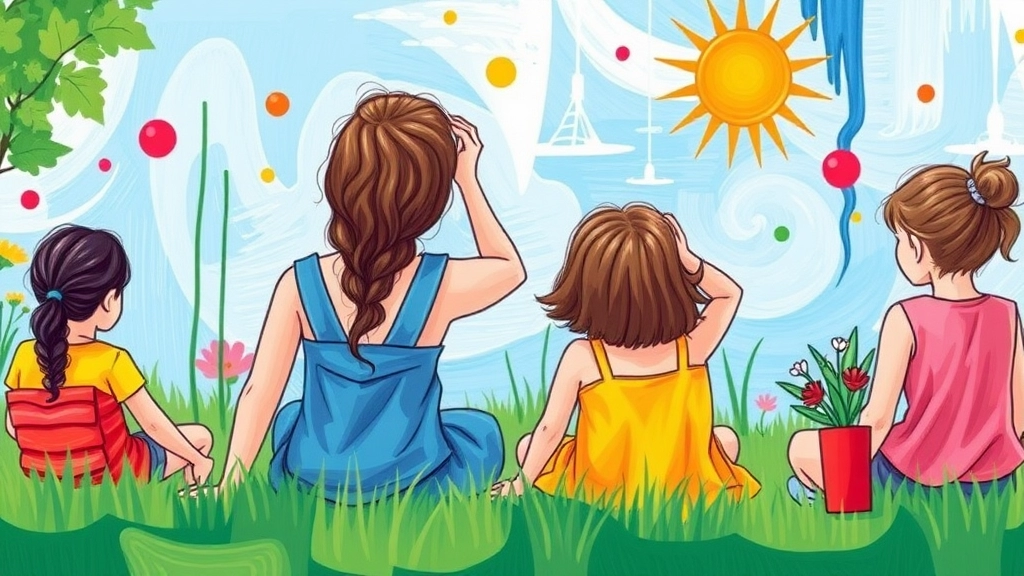
Ever wondered if art summer camps are worth it?
Let’s dive in.
Why Attend an Art Summer Camp?
Art summer camps offer a bunch of benefits, especially if you’re serious about your creative journey.
Here’s why:
1. Skill Development
Want to level up your art game?
Art camps provide hands-on experience with various mediums and techniques.
- Painting
- Drawing
- Sculpting
You name it, they’ve got it.
2. Creative Freedom
Feel stuck in a creative rut?
These camps give you the freedom to explore and experiment without the pressure of grades or deadlines.
3. Networking Opportunities
Meet like-minded people.
- Fellow artists
- Instructors
- Guest speakers
Building connections can open doors you didn’t even know existed.
4. Confidence Boost
Nothing boosts confidence like seeing your work improve.
And trust me, it will.
5. Fun and Relaxation
It’s not all work and no play.
Art camps mix learning with fun activities to keep things balanced.
Personal Stories
Take Jane, for instance.
She attended an art camp last summer.
She started with basic sketches and ended up creating a full-blown mural by the end of the camp.
FAQs
Still got questions?
Check out our FAQ section for more details.
How to Choose the Right Art Summer Camp
Alright, let’s tackle one of the biggest questions you might have: How do you choose the right art summer camp? It’s a big decision, and you probably have a million things running through your mind.
âWill my kid enjoy it?â
âIs it worth the money?â
âWhat if the camp doesn’t offer the right activities?â
These are all valid concerns, and trust me, you’re not alone. So, let’s break it down in a way that makes it easy to decide.
Identify Your Goals and Interests
First off, what are you or your child’s goals? Are you looking to improve specific skills like painting or sculpting? Or maybe you’re just looking for a fun, creative environment to spend the summer. Knowing what you want out of the camp can help narrow down your options.
- Skill Development: If you’re aiming to hone specific skills, look for camps that focus on those areas.
- General Creativity: If it’s more about having fun and exploring different mediums, a camp with a variety of activities might be your best bet.
Research the Camp’s Reputation
Next, do some homework on the camp’s reputation. You wouldn’t buy a car without reading reviews, right? Same goes here.
- Reviews and Testimonials: Look for reviews from other parents and campers. Websites, social media, and even word-of-mouth can be goldmines of information.
- Accreditation: Check if the camp is accredited by reputable organisations. This can give you peace of mind that the camp meets certain standards.
Consider the Camp’s Location and Duration
Location matters. You don’t want to spend half your summer stuck in traffic. Also, think about the camp’s duration. Are you looking for a day camp or an overnight camp?
- Proximity: Choose a camp that’s conveniently located. This makes drop-offs and pick-ups easier and less stressful.
- Length of Stay: Decide if a week-long camp or a full summer session fits better with your schedule and needs.
Evaluate the Staff and Instructors
The people running the show are crucial. Good instructors can make or break the experience.
- Qualifications: Look for camps that employ qualified, experienced instructors.
- Staff-to-Camper Ratio: A lower ratio means more personalised attention, which can be especially important for beginners.
Check the Offered Activities and Programs
Make sure the camp offers the activities and programs that interest you. A camp might be highly rated, but if it doesn’t offer what you’re looking for, it’s not the right fit.
- Variety: A wide range of activities can keep things interesting.
- Specialisation: If you’re looking to specialise, make sure the camp offers in-depth programs in that area.
Budget and Financial Aid
Let’s be real. Cost is a big factor. Art camps can be pricey, but many offer financial aid or scholarships.
- Cost: Compare the costs of different camps, but don’t just go for the cheapest option. Consider the value you’re getting.
- Financial Aid: Look into scholarships or financial aid options. Many camps offer assistance to make it more affordable.
Visit the Camp if Possible
If you can, visit the camp before making a decision. This gives you a real feel for the environment and facilities.
- Open Houses: Many camps offer open houses or tours. Take advantage of these opportunities.
- Talk to Staff: Don’t be afraid to ask questions. The staff should be willing to provide all the information you need.
If you’re looking for a well-rounded summer camp experience, consider exploring options like the Primrose Summer Camps which offer a good mix of fun and learning. For those interested in more specialized camps, the STEM Summer Camps provide excellent opportunities to dive deep into specific areas of interest.
Activities and Programs Offered
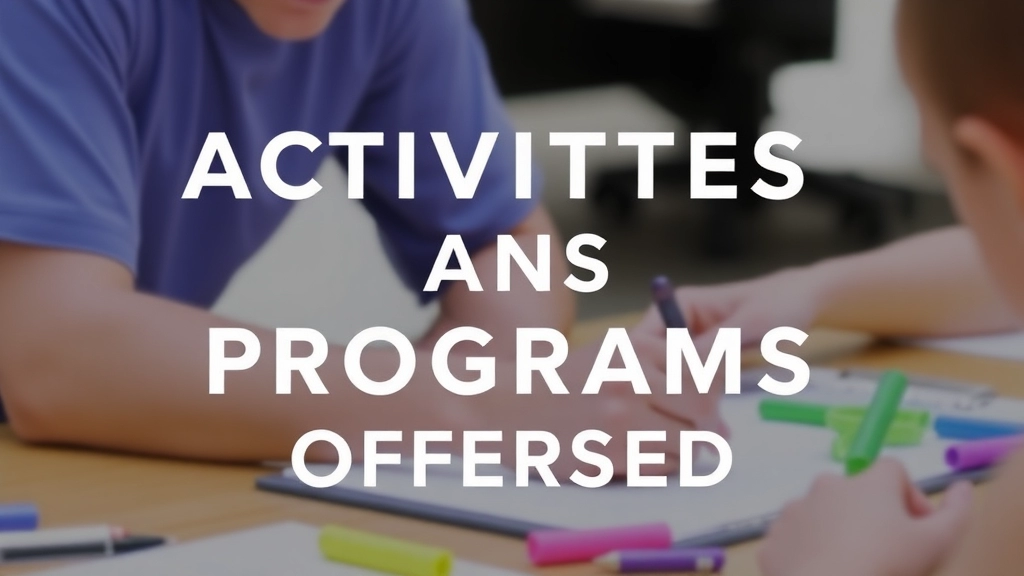
Alright, let’s talk about the good stuff—activities and programs offered at art summer camps.
Ever wondered what your kiddo will actually do all day at an art camp?
I get it.
You’re not just tossing them into a room with some crayons and calling it a day.
No way.
These camps are packed with a variety of activities that keep things fresh and exciting.
1. Drawing and Painting
Drawing and painting are the bread and butter of any art camp.
Kids get hands-on experience with different mediums like watercolours, acrylics, and pastels.
They learn techniques from shading to perspective.
2. Sculpture and Clay Modelling
Ever seen a kid’s eyes light up when they’re squishing clay?
Sculpture and clay modelling let them create 3D art pieces.
It’s messy, but it’s a blast.
3. Digital Art and Animation
In today’s digital age, digital art and animation are huge.
Kids learn to use software like Photoshop and Illustrator.
Some camps even offer basics in animation—think mini Pixar creators in the making.
4. Printmaking
Printmaking might sound fancy, but it’s super accessible.
Kids learn to create art through methods like screen printing and etching.
It’s all about turning their ideas into prints they can share.
5. Mixed Media and Collage
Mixed media and collage sessions let kids combine different materials.
Think magazine cut-outs, fabric, and paint all in one masterpiece.
It’s a great way to let their creativity run wild.
6. Photography
Some camps offer photography workshops.
Kids learn the basics of capturing the perfect shot.
They even get to experiment with different types of cameras and editing software.
7. Performance Art
Performance art isn’t just for drama camps.
Some art camps include activities like puppet shows or live installations.
It’s all about expressing creativity in dynamic ways.
8. Art History and Appreciation
Understanding where art comes from helps kids appreciate what they’re creating.
Art history and appreciation sessions cover famous artists and movements.
It’s like a mini art history class but way more fun.
9. Outdoor Art Activities
Art doesn’t have to stay indoors.
Outdoor art activities might include nature sketching or creating land art.
It gets kids outside and inspired by their surroundings.
Why These Activities Matter
These activities aren’t just for fun.
They help kids:
- Develop fine motor skills
- Improve focus and patience
- Build confidence
- Learn to express themselves
Age Groups and Skill Levels
Ever wondered if your child is too young or too advanced for an art summer camp? You’re not alone. One of the most common questions parents ask is, “What age groups and skill levels do these camps cater to?” Let’s break it down, no fluff, just the real deal.
Age Groups: From Toddlers to Teens
Art summer camps are designed to accommodate a wide range of age groups. Here’s a quick rundown:
- Toddlers (Ages 3-5): These camps are all about fun and creativity. Think finger painting, basic crafts, and lots of play.
- Kids (Ages 6-12): This age group often enjoys a mix of drawing, painting, sculpting, and even some digital art. It’s a great time to explore different mediums.
- Teens (Ages 13-18): These camps usually offer more advanced techniques and specialised workshops. It’s the perfect stage for honing skills and building a portfolio.
Skill Levels: From Beginners to Advanced Artists
No matter where your child is on their artistic journey, there’s a camp for them. Let’s break it down:
- Beginners: If your child is just starting out, beginner camps focus on basic techniques and foundational skills. It’s all about discovering the joy of art.
- Intermediate: For those with some experience, these camps dive deeper into specific techniques and mediums. It’s a chance to refine their skills.
- Advanced: These are for the serious young artists. Advanced camps often feature masterclasses, portfolio development, and even opportunities to exhibit their work.
Why Age Groups and Skill Levels Matter
Matching the right age group and skill level ensures that your child gets the most out of their camp experience. Here’s why it’s crucial:
- Engagement: Kids are more likely to stay engaged when the activities are age-appropriate and match their skill level.
- Learning: Tailored programs mean your child will learn at a pace that’s right for them, without feeling overwhelmed or bored.
- Socialising: Being with peers of similar age and skill level makes it easier to form friendships and collaborate on projects.
Real Talk: What Parents Worry About
“Will my child fit in?” This is a common concern. Rest assured, art camps are designed to be inclusive. Whether your child is a budding Picasso or just loves to doodle, there’s a spot for them.
“Is my child too young or too old?” With camps available for various age groups, there’s something for everyone. Even if your child is a bit younger or older than the typical age range, many camps offer flexibility.
“What if my child is not good at art?” Skill levels vary, and that’s okay. The goal is to nurture creativity and have fun. Plus, everyone starts somewhere!
Quick Tips for Choosing the Right Camp
- Check the Age Range: Make sure the camp aligns with your child’s age group.
- Assess Skill Levels: Look for camps that offer different levels of instruction.
- Read Reviews: See what other parents and kids have to say.
- Visit the Camp: If possible, visit the camp beforehand to get a feel for the environment.
For more insights on selecting the perfect camp, check out our guide on STEM summer camps and the top summer camps for teens that offer a variety of activities to suit different interests and skill levels.
Tips for Preparing for Art Summer Camp
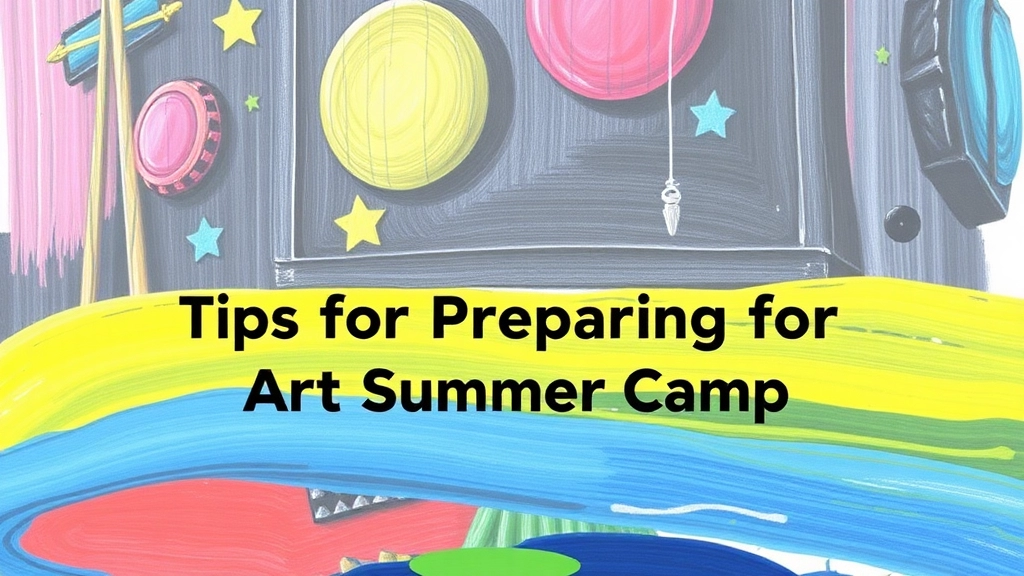
Worried about getting ready for art summer camp?
You’re not alone.
Let’s make this easy, fun, and stress-free.
First things first: What to pack?
- Art Supplies: Check the camp’s list. Bring your favourites if allowed.
- Clothing: Comfy clothes you don’t mind getting messy.
- Personal Items: Sunscreen, water bottle, and any meds.
Next up: Mental Prep
- Set Goals: What do you want to learn or improve?
- Mindset: Be open to new techniques and ideas.
- Practice: A bit of sketching or painting before camp can boost your confidence.
Health and Safety
- Emergency Contacts: Make sure the camp has your info.
- Medications: Pack these in a labelled bag.
- Allergies: Inform the camp staff.
Social Tips
- Be Friendly: Everyone’s there to learn and have fun.
- Share: Your ideas and materials.
- Ask Questions: No one’s expecting you to know everything.
Final Checklist
- Confirm Registration: Double-check dates and times.
- Travel Plans: Know your route and schedule.
- Money Matters: Bring a little cash or card for emergencies.
Quick Story
I remember my first art camp.
I was nervous, didn’t know anyone.
But I packed my favourite sketchbook and some snacks.
By the end of the week, I had new friends and a bunch of new skills.
Ready to rock that art camp?
Just follow these tips, and you’ll be all set for an amazing experience.
Got more questions? Check out our FAQ section for more details.
Cost and Financial Aid Options
Alright, let’s dive straight into it. One of the biggest questions on everyone’s mind when considering an art summer camp is, “How much is this going to cost me?” It’s a valid concern, and trust me, you’re not alone in worrying about it.
Understanding the Costs
The cost of art summer camps can vary widely. Here’s what you need to know:
- Basic Camps: These are your entry-level camps, typically costing anywhere from £200 to £500 per week. They usually offer a range of activities but might not have the specialised equipment or instructors you’d find at pricier camps.
- Mid-Range Camps: Expect to pay between £500 to £1,000 per week. These camps often have more experienced instructors, better facilities, and a wider range of activities.
- High-End Camps: These can cost upwards of £1,000 per week. They offer top-notch facilities, highly qualified instructors, and sometimes even celebrity guest artists.
What Does the Fee Include?
Before you balk at the price, consider what’s included:
- Instruction: Quality lessons from experienced artists.
- Materials: Paints, brushes, canvases, and other art supplies.
- Meals: Some camps include meals in their fees.
- Field Trips: Excursions to museums or galleries may be part of the package.
Financial Aid Options
Now, let’s talk about financial aid. Many camps understand that not everyone can afford the fees and offer various types of financial assistance. Here’s a breakdown:
- Scholarships: Many camps offer scholarships based on talent, need, or a combination of both. It’s worth applying even if you think you might not qualify.
- Payment Plans: Some camps offer the option to pay in instalments, making it easier to manage the cost over time.
- Early Bird Discounts: Sign up early and you might snag a discount.
- Sibling Discounts: If you’re enrolling more than one child, ask about sibling discounts.
Real Stories, Real Solutions
Let me share a quick story. A friend of mine, Jane, was worried about the cost of sending her daughter to a high-end art camp. She applied for a scholarship and was pleasantly surprised when her daughter was awarded a partial one. They also opted for a payment plan, making it manageable.
Tips to Save Money
Here are some practical tips to help you save:
Success Stories and Testimonials
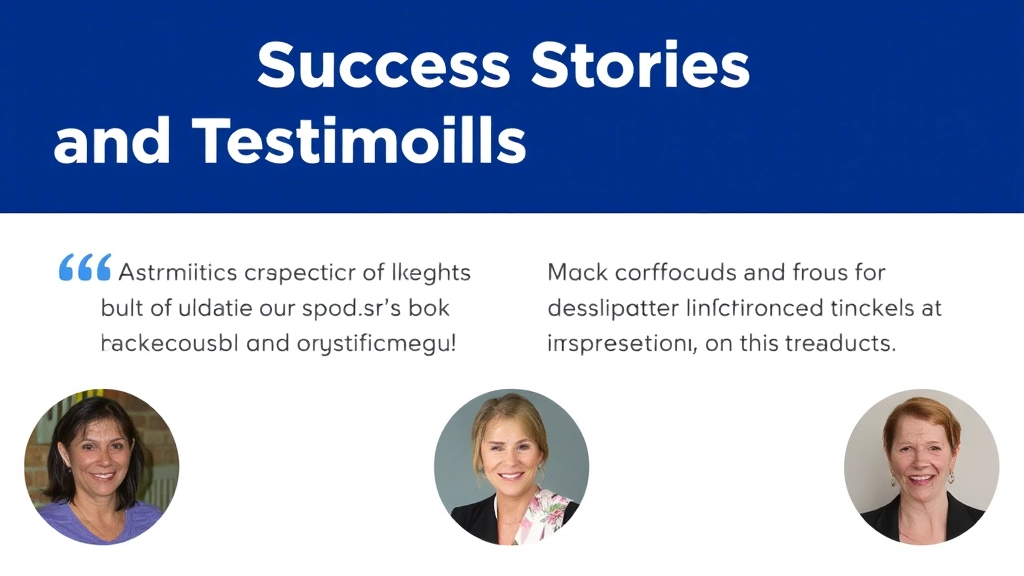
Why should I send my kid to an art summer camp?
It’s a question many parents ask.
And it’s a good one.
You want to know if it’s worth it, right?
Well, let me share some real success stories and testimonials that might help you decide.
Real Stories, Real Wins
1. Sarah’s Transformation
Sarah was shy.
Barely spoke up in class.
Her parents sent her to an art summer camp, hoping she’d find her voice.
Guess what?
She did.
Sarah discovered a passion for painting.
She made friends, gained confidence, and even won a local art contest.
Her mum says, “She’s a different person now. More confident, more expressive.”
2. Tom’s Breakthrough
Tom struggled with focus.
His parents were at their wit’s end.
They enrolled him in a sculpture program at an art camp.
It worked wonders.
Tom found that working with his hands helped him concentrate.
He brought home a clay model of a dragon that now sits proudly on their mantelpiece.
His dad says, “Tom’s focus has improved not just in art but in school too.”
Testimonials From Happy Campers
“I loved every minute!”
That’s what Emma, a 12-year-old camper, had to say.
She attended a mixed-media art camp.
From painting to digital art, she tried it all.
Emma says, “I can’t wait to go back next summer!”
“Best decision ever!”
That’s from James, a parent.
His daughter, Lily, attended a fashion design camp.
She came back with a mini clothing line she designed herself.
James says, “Lily’s creativity has soared. She’s even talking about a career in fashion now.”
Why These Stories Matter
These stories aren’t just feel-good moments.
They’re proof.
Proof that art summer camps can make a real difference.
They boost confidence, improve focus, and ignite passions.
And let’s be honest, who wouldn’t want that for their kid?
Your Turn
Got a budding artist at home?
Thinking about enrolling them in an art summer camp?
These success stories show it can be a game-changer.
So go ahead, take the plunge.
Your child might just be the next success story we talk about.
Ready to make a change?
Don’t wait.
Art summer camps can be the catalyst your child needs.
Check out our page on How to Choose the Right Art Summer Camp to get started.
Frequently Asked Questions about Art Summer Camps
Wondering if art summer camps are worth it?
You’re not alone.
Let’s dive into the nitty-gritty of what you need to know.
1. What types of art summer camps are available?
There are loads of options out there.
From painting and drawing to digital art and sculpture.
Some camps even offer specialised programs like animation or fashion design.
2. How do I know if an art summer camp is right for my child?
First, consider their interests.
Do they love creating?
Are they curious about different art forms?
Then, think about their skill level.
Many camps cater to beginners as well as advanced artists.
3. What benefits can my child gain from attending an art summer camp?
Loads.
- Skill Development: They’ll learn new techniques and improve their existing skills.
- Creativity Boost: A structured environment can really spark their imagination.
- Social Skills: They’ll meet like-minded peers and make new friends.
- Confidence: Completing projects can give them a sense of accomplishment.
4. What activities and programs are typically offered?
Expect a mix of:
- Workshops: Focused on specific skills or techniques.
- Group Projects: Collaborative efforts that teach teamwork.
- Exhibitions: Showcasing their work at the end of the camp.
5. What age groups and skill levels do art summer camps cater to?
Most camps are divided into age groups:
- Young Kids (5-10): Basic art skills and fun projects.
- Tweens (11-13): More advanced techniques and mediums.
- Teens (14-18): Intensive programs, sometimes portfolio prep.
6. How can I prepare my child for art summer camp?
Here are some quick tips:
- Pack the Essentials: Art supplies, comfortable clothes, and snacks.
- Talk About Expectations: Explain what they’ll be doing and learning.
- Encourage Openness: Remind them to be open to new experiences and making friends.
7. What does it cost, and are there financial aid options?
Costs can vary widely.
Some camps are pricey, but many offer scholarships or sliding scale fees.
Check the camp’s website or contact them directly for details.
8. Are there any success stories or testimonials?
Absolutely.
Many past campers have gone on to pursue art professionally.
Check the camp’s website for testimonials and success stories.
9. What are the most common concerns parents have?
Parents often worry about:
- Safety: Camps usually have strict safety protocols.
- Quality: Look for accredited programs with experienced instructors.
- Social Fit: Camps often have activities to help kids bond and make friends.
10. How do I find the best art summer camp for my child?
Do your research.
- Read Reviews: Look for feedback from other parents.
- Visit Open Houses: If possible, visit the camp beforehand.
- Ask Questions: Don’t hesitate to contact the camp for more info.
- Explore Options: Check out various summer camps for teens that offer art programs.
Frequently Asked Questions about Art Summer Camps
What are the main benefits of attending an art summer camp?
Art summer camps offer numerous benefits such as skill development, creative freedom, networking opportunities, confidence boost, and a mix of fun and relaxation. These camps provide hands-on experience with various art mediums and techniques, allowing attendees to explore and experiment in a stress-free environment.
What types of activities are typically offered at art summer camps?
Art summer camps offer a wide range of activities including drawing and painting, sculpture and clay modelling, digital art and animation, printmaking, mixed media and collage, photography, performance art, art history and appreciation, and outdoor art activities. These activities are designed to keep things fresh and exciting while helping kids develop various skills.
How should I prepare for an art summer camp?
Preparation involves packing essential items like art supplies, comfortable clothing, and personal items such as sunscreen and water bottles. Mental preparation includes setting goals, being open to new techniques, and doing a bit of practice beforehand. Ensure health and safety by providing emergency contacts, medications, and allergy information to the camp staff. Social tips include being friendly, sharing ideas and materials, and asking questions.
Are there any success stories from past attendees?
Yes, there are several success stories. For example, Sarah, who was initially shy, discovered a passion for painting and gained confidence after attending an art camp. Tom, who struggled with focus, improved his concentration through a sculpture program. Testimonials from happy campers and parents highlight the transformative impact of art summer camps on children’s creativity and confidence.
What should I pack for an art summer camp?
Essential items to pack include art supplies (check the camp’s list for specifics), comfortable clothing that can get messy, and personal items like sunscreen, water bottles, and medications. Having emergency contacts and allergy information readily available is also important.
How do art summer camps help in skill development?
Art summer camps provide hands-on experience with various art mediums and techniques such as painting, drawing, and sculpting. These camps offer structured activities that help attendees improve their fine motor skills, focus, patience, and overall artistic abilities.
What kind of networking opportunities are available at art summer camps?
Art summer camps offer opportunities to meet fellow artists, instructors, and guest speakers. Building these connections can open doors to new opportunities and collaborations in the future.
How do art summer camps boost confidence?
Seeing your work improve and receiving positive feedback can significantly boost confidence. Art summer camps provide a supportive environment where attendees can experiment and grow without the pressure of grades or deadlines.
Are there any outdoor activities in art summer camps?
Yes, many art summer camps include outdoor art activities such as nature sketching and creating land art. These activities help kids get inspired by their surroundings and enjoy the outdoors while being creative.
What should I do if my child has allergies or needs medication during camp?
Inform the camp staff about any allergies and provide detailed instructions for any medications your child needs. Pack medications in a labelled bag and ensure the camp has all necessary emergency contact information.
Can art summer camps help with career aspirations in the arts?
Absolutely. Many attendees discover new passions and skills that can influence their career choices. For example, some kids may develop an interest in fashion design, digital art, or animation, which can lead to future career opportunities.
References
-
10 Benefits of Attending Art Summer Camp
-
Why Art Camps Are Important for Children
-
Summer Art Camps for Kids

